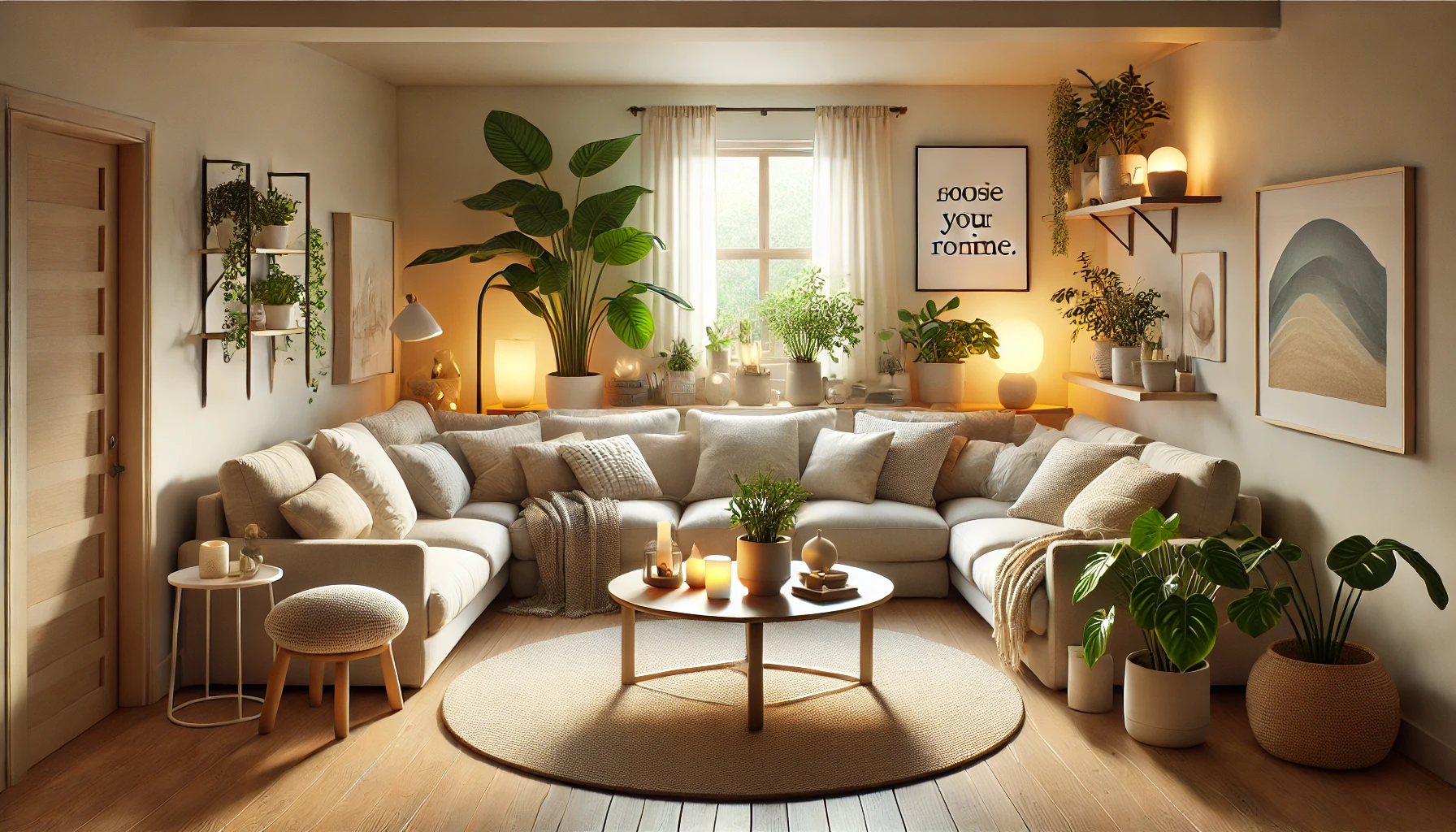When multiple people share a home—partners, roommates, family members—energy can easily become fragmented or tense. Feng Shui helps align not just physical space, but also interpersonal dynamics. With thoughtful adjustments, you can cultivate balance, respect, and emotional ease in common areas, making them feel like shared sanctuaries instead of battlegrounds.
Here’s how to use Feng Shui to promote harmony in shared living spaces.
1. Define Shared vs. Private Areas Clearly
Lack of boundaries creates tension.
- Use rugs, screens, or furniture placement to clearly define public and private zones
- Agree on which spaces are for everyone and which are more personal (e.g., “This shelf is mine; this one is shared”)
- If possible, allow each person a space they can control and personalize
- Maintain clear visual cues so energy doesn’t blur or invade unnecessarily
Clear zones reduce unspoken conflict and support energetic respect.
2. Keep Common Areas Clutter-Free
Clutter equals confusion—especially in shared energy zones.
- Establish a weekly reset ritual where everyone pitches in
- Use closed storage like baskets, cabinets, and ottomans with lids
- Assign designated spots for shoes, bags, mail, and electronics
- Avoid using shared spaces as drop zones for personal items
A clean space promotes shared calm.
3. Use Round or Oval Shapes in Furniture and Decor
Sharp corners and harsh angles create energetic conflict.
- Choose round or oval coffee tables, dining tables, and decor
- Avoid furniture that forces people into cramped or awkward movement
- Round shapes encourage smoother communication and movement
- If square or rectangular shapes are unavoidable, soften them with textiles or nearby plants
Curves invite collaboration—edges reinforce opposition.
4. Balance Yin and Yang in Shared Spaces
Too much Yang (bright, active) creates stress. Too much Yin (quiet, still) creates stagnation.
- Blend soft elements (cushions, rugs, throws) with functional structure (tables, lighting)
- Use warm lighting, not overly harsh or cold bulbs
- Avoid extreme decor—keep colors grounded and emotionally neutral
- Incorporate both inviting textures and clear organization
This balance makes the space equally supportive for work, rest, and connection.
5. Use Colors That Foster Connection
Color sets the emotional tone of the space.
- Earth tones (tan, terracotta, cream): grounding and inclusive
- Soft greens and blues: calming and harmonizing
- Warm neutrals: friendly and non-dominant
- Avoid harsh contrasts or overly personal statement colors in shared areas
Let the palette feel safe and unifying.
6. Add a “Togetherness Object”
Create a shared symbol or object that reflects unity.
- A plant cared for by everyone
- A framed quote or artwork that represents collective values
- A centerpiece or candle used during group dinners or rituals
- A family or housemate agreement displayed creatively
Symbolism strengthens invisible energetic bonds.
7. Use Mirrors Thoughtfully
Mirrors multiply energy—and emotion.
- In living rooms or dining areas, place mirrors where they reflect light, not tension
- Avoid mirrors that reflect clutter, conflict zones, or bathrooms
- Use rounded mirrors when possible to soften and expand space
- Keep mirrors clean and intentional, not excessive
Proper mirror placement encourages openness and shared joy.
8. Incorporate Scent to Shift Emotional Energy
Scent unifies space energetically.
- Diffuse oils like lavender, orange, bergamot, or cedarwood
- Light incense or a scented candle before group meals or gatherings
- Use room sprays or herbal bundles to refresh after tension or arguments
- Avoid overly strong or artificial scents
A shared scent can become a cue for peace and reset.
9. Refresh the Energy Together
Energy builds up over time—clear it regularly as a group.
- Do a monthly smudging or sound-clearing ritual together
- Rearrange furniture or refresh artwork every season
- Open windows, light candles, or play soft music to shift emotional tone
- Involve everyone in choosing new decor or layout tweaks
Co-creating change builds ownership and mutual respect.
10. Manage Noise and Visual Stimulation
Too much stimulation causes irritability.
- Use rugs, curtains, or wall hangings to absorb sound
- Keep TVs, speakers, or gaming consoles at respectful volume levels
- Use storage to hide visual noise like wires, boxes, or busy patterns
- Set agreements for quiet hours or solo time when needed
Soothing environments reduce unnecessary friction.
11. Personalize Without Dominating
Shared spaces should feel safe for everyone—not just one person’s aesthetic.
- Add subtle personal touches without overwhelming the space
- Create aesthetic cohesion that blends everyone’s preferences
- Rotate decor if necessary—let everyone’s identity be represented
- Use shared color schemes or mood boards to design inclusively
Balance is key between expression and consideration.
12. Welcome Guests and Energy with Intention
Your shared space is also your collective energetic doorway.
- Keep the entryway welcoming with plants, soft lighting, and order
- Light a candle or incense before guests arrive to prepare the energy
- After gatherings, clean and clear the space together
- Use the opportunity to reset and re-align your shared intentions
A well-loved space attracts well-matched connections.
Final Thoughts: Shared Space, Shared Energy
When you share a home, you also share an energetic field. Feng Shui helps you manage that field with grace, intention, and respect.
By honoring each person’s presence and creating balance in the environment, you turn your shared space into a harmonious reflection of unity—where everyone can breathe, belong, and thrive.
